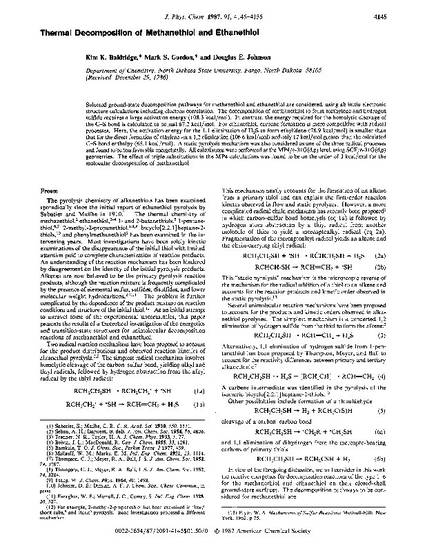
Selected ground-state decomposition pathways for methanethiol and ethanethiol are considered, using ab initio electronic structure calculations including electron correlation. The decomposition of methanethiol to form methylene and hydrogen sulfide requires a large activation energy (108.3 kcaljmol). In contrast, the energy required for the homolytic cleavage of the C-S bond is calculated to be just 67.2 kcaljmol. For ethanethiol, carbene formation is more competitive with radical processes. Here, the activation energy for the 1,1 elimination of H2S to form ethylidene (76.9 kcaljmol) is smaller than that for the direct formation of ethylene via a 1,2 elimination (106.6 kcaljmol) and only 12 kcaljmol greater than the calculated C-S bond enthalpy (65.1 kcaljmol). A static pyrolysis mechanism was also considered as one of the three radical processes and found to be less favorable energetically. All calculations were performed at the MP4/6-31G(d,p) level, using SCF /6-31G(d,p) geometries. The effect of triple substitutions in the MP4 calculations was found to be on the order of 3 kcaljmol for the molecular decomposition of methanethiol.
Available at: http://works.bepress.com/mark_gordon/60/
